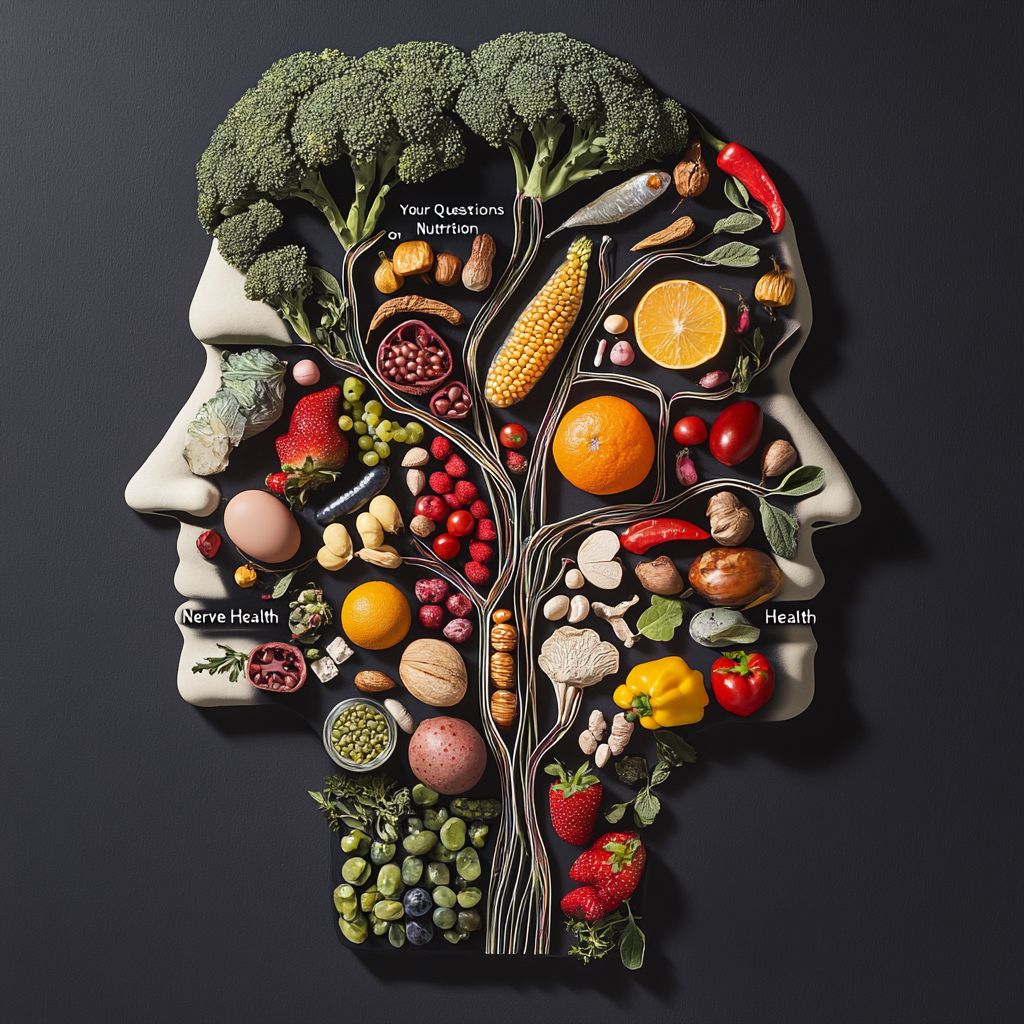- Cidpedia
- Posts
- Cidpedia Newsletter
Cidpedia Newsletter
Edition #11 6/10/2025
🌟 Central Texas Resource
ALWAYS FRESH - Start your week empowered - updates, resources, and encouragement await!
Trusted Information and Community for Patients, Caregivers, and Professionals
www.cidpedia.net
Table of Contents
Editor’s Note: “New Horizons, New Hope”
We’re Starting the CIDP Cure Series
CIDP News & Research: 2025’s Breakthroughs
They Never Sleep: “AI in CIDP—How Artificial Intelligence Is Changing Care”
Practical Guide: “Movement & Mobility—Staying Active with CIDP”
Feature Article:The New Face of CIDP Advocacy: Why Patient-Led Initiatives Matter Now More Than Ever
Resource Spotlight: “Best Apps & Tools for CIDP Patients”
Ask the Expert: “Your Questions on Nutrition & Nerve Health”
Quick Poll & Announcements
Disclaimer & Contact

✉️ Editor’s Note: “New Horizons, New Hope”
Welcome to Issue #11
This summer, CIDP care is evolving faster than ever. From AI-powered diagnostics to new approaches for movement and daily life, our community is stronger, smarter, and more connected. Whether you’re newly diagnosed or a CIDP veteran, this issue brings you the latest insights, practical tools, and real voices from our global family. Let’s move forward—together.
🧭 We’re Starting the CIDP Cure Series
CIDP is a journey marked by uncertainty, hope, and the relentless pursuit of answers. For too long, the conversation around CIDP has been limited to symptom management and slow progress. Our community deserves more—a vision that looks beyond maintenance and dares to ask: What will it take to find a cure?
We’re launching the CIDP Cure Series to ignite that conversation and help drive real change. This series will spotlight the latest research, interview scientists and clinicians on the front lines, and share stories from patients who are participating in groundbreaking trials. Our goal is to bridge the gap between the lab and daily life, making complex science accessible and actionable for everyone affected by CIDP.
But this isn’t just about information—it’s about empowerment. By following the Cure Series, you’ll be equipped to ask better questions, advocate for yourself and your loved ones, and become part of a movement that refuses to settle for the status quo. Together, we may help accelerate progress, inspire hope, and keep the dream of a true cure alive. Join us as we chart the path forward—one story, one breakthrough, one step at a time.
📰 CIDP News & Research: 2025’s Breakthroughs
AI-Driven CIDP Diagnostic Tool Approved:
The FDA has cleared the first software that uses artificial intelligence to analyze nerve conduction studies and MRI scans, reducing diagnosis time by 40%. Early adoption in major neurology centers is already improving patient outcomes.Wearable Nerve Monitors:
New wristband devices now track nerve function and fatigue in real time, alerting patients and doctors to early signs of relapse.Global Registry Launch:
The International CIDP Registry, launched in April, allows patients to securely share data and access the latest clinical trial opportunities worldwide.

Visualize
🧠 They Never Sleep: “AI in CIDP—How Artificial Intelligence Is Changing Care”
Artificial intelligence is transforming how doctors diagnose and treat CIDP.
Faster, More Accurate Diagnosis:
AI algorithms now interpret complex nerve conduction data, flagging subtle patterns even experienced neurologists might miss. This means less waiting, fewer misdiagnoses, and earlier treatment.Personalized Treatment Plans:
Machine learning models predict which therapies (IVIg, steroids, FcRn inhibitors) are most likely to work for each patient, based on genetics, symptoms, and past responses.Remote Monitoring:
Smart apps and wearable sensors let patients track symptoms and medication side effects, sending real-time updates to their care team.What’s Next?
Experts predict that, within five years, AI will enable “virtual second opinions” and help rural patients access top-tier care from home.
🏃 Practical Guide: “Movement & Mobility—Staying Active with CIDP”
Staying active with CIDP can feel daunting, but gentle movement is vital for nerve health, mood, and independence. Here’s how to get started safely:
Find Your Baseline:
Start with a physical therapist to assess your current strength and balance.Low-Impact Activities:
Swimming, chair yoga, and stretching can build endurance without stressing nerves.Daily Micro-Movements:
Set a timer to stand, stretch, or walk a few steps every hour.Use Adaptive Tools:
Canes, walkers, and grab bars reduce fall risk and boost confidence.Celebrate Small Wins:
Progress is personal—every extra step, stretch, or minute of activity counts.Listen to Your Body:
Rest when needed and avoid pushing through pain.

Cooperate
📅 Feature Article: The New Face of CIDP Advocacy: Why Patient-Led Initiatives Matter Now More Than Ever
In 2025, the landscape of CIDP is shifting rapidly. New treatments are emerging, clinical trials are expanding, and digital communities are more connected than ever. Yet, the most powerful force driving progress isn’t just in the lab or the clinic—it’s in the voices of patients themselves.
The Rise of Patient-Led Advocacy
Historically, advocacy for rare diseases like CIDP was led by large organizations or medical professionals. While these groups remain crucial, a new wave of patient-led initiatives is redefining what it means to fight for better care. Patients are no longer passive recipients of information—they’re researchers, educators, and activists. They’re running support groups, launching podcasts, and even partnering with scientists to design smarter clinical trials.
This shift matters. When patients lead, the conversation changes. Instead of focusing solely on what’s possible in theory, advocacy becomes grounded in what’s urgently needed in real life: faster diagnosis, fairer insurance coverage, and treatments that reflect the day-to-day realities of living with CIDP.
Digital Platforms: Leveling the Playing Field
Social media and digital newsletters have given patients unprecedented reach. A single story shared on Facebook or a well-researched article in a newsletter can spark national conversations, influence policy, and attract funding for new research. Online communities also break down geographic barriers, connecting people in rural areas with the latest resources and support.
But with this power comes responsibility. Patient-led platforms must commit to accuracy, transparency, and inclusivity. By partnering with medical experts and fact-checking every claim, these initiatives can become trusted hubs for both hope and reliable information.
Advocacy in Action: Real-World Impact
Consider the recent push for home-based infusion options. It wasn’t just drug companies or doctors who made this happen—it was patients sharing their struggles with travel, infection risk, and lost workdays. Their stories, amplified through newsletters and advocacy groups, led to policy changes and new product approvals that have made treatment safer and more accessible for thousands.
Similarly, patient voices have been instrumental in shaping clinical trial design. By sharing what outcomes matter most—mobility, fatigue, independence—patients ensure that research reflects real-world priorities, not just lab metrics.
The Road Ahead: Challenges and Opportunities
Despite these advances, challenges remain. Many patients still face delays in diagnosis, insurance denials, and a lack of local specialists. The digital divide can leave some behind, especially older adults or those without reliable internet access. And as advocacy grows, so does the risk of misinformation.
The solution? Collaboration. Patient-led initiatives must work hand-in-hand with clinicians, researchers, and established organizations. By building coalitions, sharing resources, and centering the lived experience, the CIDP community can drive progress on every front.
Why Now Is the Time
The momentum is real. With new therapies on the horizon and a global community ready to mobilize, there’s never been a better time to get involved. Whether you’re a patient, caregiver, or ally, your story and your voice matter. By supporting patient-led advocacy, you’re not just helping yourself—you’re paving the way for the next generation of CIDP warriors.
The CIDP Cure Series is our commitment to this movement. We invite you to join us—ask questions, share your experiences, and become part of a community that believes in action, not just awareness. Together, we can make the future brighter for everyone living with CIDP.

Instant
📱 Resource Spotlight: “Best Apps & Tools for CIDP Patients”
NerveTrack: Symptom & infusion tracker with exportable reports for your doctor.
MyMeds: Medication reminders and refill alerts.
CareCircle: Connects you with local CIDP support groups and virtual meetups.
Calm: Guided meditations tailored for chronic illness and pain.
Accessible Home: Tips and checklists for adapting your living space
RESOURCES VERIFIED JUNE 2025
CIDP Overview and Patient Support
GBS/CIDP Foundation International
The leading nonprofit for CIDP, offering trusted information, treatment guides, and support resources for patients and caregivers.
CIDP Treatment Updates & Research
NeurologyLive – CIDP Treatment Options
Covers the latest in CIDP therapies, including new drugs, clinical trial data, and expert interviews.
Clinical Trials and Research Participation
ClinicalTrials.gov – CIDP Trials
The official U.S. government database for all active and recruiting CIDP clinical trials worldwide.
Practical Living & Mobility Tips
KnowingPN – CIDP Tools & Resources
Offers practical guides, recommended apps, and daily living strategies for CIDP patients.
Latest Breakthroughs & News
Rare Disease Advisor – CIDP News
Covers emerging research, FDA approvals, and new diagnostics.

Nerve Food
❓ Ask the Expert: “Your Questions on Nutrition & Nerve Health”
Q: Are there foods that can help nerve repair?
A: A balanced diet rich in B vitamins (especially B12), omega-3 fatty acids, and antioxidants can support nerve health. Fish, leafy greens, nuts, and berries are great choices.
Q: Should I avoid anything?
A: Limit processed foods, excess sugar, and alcohol. Always consult your doctor before starting supplements.

Input
📊 Quick Poll & Announcements
Poll: What’s your biggest challenge right now?
Fatigue
Access to care
Mobility
Emotional Health
Announcements:
Next issue: “CIDP & Mental Health—Breaking the Silence”
Submit your story or question for a chance to be featured!

📅 Closing Thoughts & How to Get Involved
Take advantage of these newsletters. Ask questions, and share what works for you. Together, we’re building a stronger, more informed CIDP community.
Want to support Cidpedia?
Share this newsletter, consider a small donation, or send us your feedback. Every voice matters.
Stay connected!
Warm regards,
Richard Aikman
Editor, Cidpedia.net
⚠️ Disclaimer
Let's get something important out in the open: WE ARE NOT DOCTORS and WE ARE NOT GIVING ADVICE! Everything we share comes from my personal journey living with CIDP, from research and from MY healthcare TEAM. While I've walked this path for a number of years, please remember: |
Cidpedia is an independent, patient-led newsletter. All information provided is for educational and informational purposes only and is not intended as medical advice, diagnosis, or treatment. We are not medical professionals. Always consult your physician or qualified health provider with any questions regarding your health or medical conditions. We respect your privacy and adhere to HIPAA guidelines when sharing stories or community contributions. All shared experiences are anonymized unless explicit permission is granted |
Stay strong, stay curious, and keep shuffling forward. 🌱

Reply